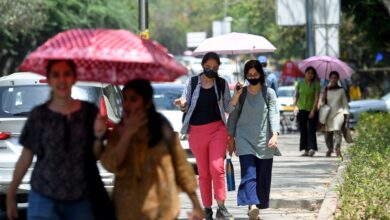Rs 20,000 crore defence corridor will transform Bundelkhand

BHOPAL: Prime Minister Narendra Modi’s announcement of a defence industrial corridor in Bundelkhand has raised hopes in Madhya Pradesh of transforming this parched region into a land of opportunity.
Geographically, MP has the larger share of Bundelkhand. If it gets a fair share of the Rs 20,000 crore investment and 2.5 lakh jobs, the defence corridor will prove to be a lifeline in one of the most underdeveloped regions of the country, with the highest migration rate.
“Heartfelt gratitude to PM Narendra Modi for announcing a defence industrial corridor for Bundelkhand. It will generate significant employment opportunities,” tweeted chief minister Shivraj Singh Chouhan in reply to the PMO’s tweet on the announcement. “The defence industrial corridor will generate more than 2.5 lakh jobs and indirect employment will increase manifold. I welcome the PM’s decision to shower such a major favour on Bundelkhand,” state finance minister Jayant Malaiya told TOI.
Of the 13 districts that make up Bundelkhand, six and-a-half lie in Madhya Pradesh — Datia, Chhatarpur, Tikamgarh, Panna, Damoh, Sagar and part of Chitrakoot (the other part is in Uttar Pradesh). Agriculture is the predominant occupation in Bundelkhand with low industrialisation and low urbanisation. The majority of rural households rely on income from seasonal migration for work.
The Confederation of Indian Industries (CII), Madhya Pradesh council, believes the defence corridor has major potential for industrial transformation of the region. “CII welcomes the announcement of Bundelkhand defence corridor. This will catalyse development of the backward region of MP and UP. It will not only help in creation of muchneeded jobs but also make India self-reliant in critical defence needs,” said Anshul Mittal, chairman, CII MP.
Defence corridor key to prosperity
Madhya Pradesh’s contribution could be in the form of land as the state has huge tracts of it suitable for a major industrial set-up, say officials.
Though agriculture is the mainstay of Bundelkhand’s economy, conditions are unfavourable for growth of cash crops like sugarcane and cotton, which is one of the reasons for its backwardness.
Productivity is affected by poor water retention ability of the soil, weather fluctuations and large amount of wasteland.
Rising input costs and frequent droughts are pushing agricultural labourers and small farmers out of farming.
The high percentage of household industry workers in Damoh and Sagar is due to the beedi industry. There were only two large manufacturing units in the entire region. No small or cottage industry commanded a large market outside. Despite international destinations like Khajuraho and Orchha, the potential of tourism had not been well realised and service industry was limited to pockets.





